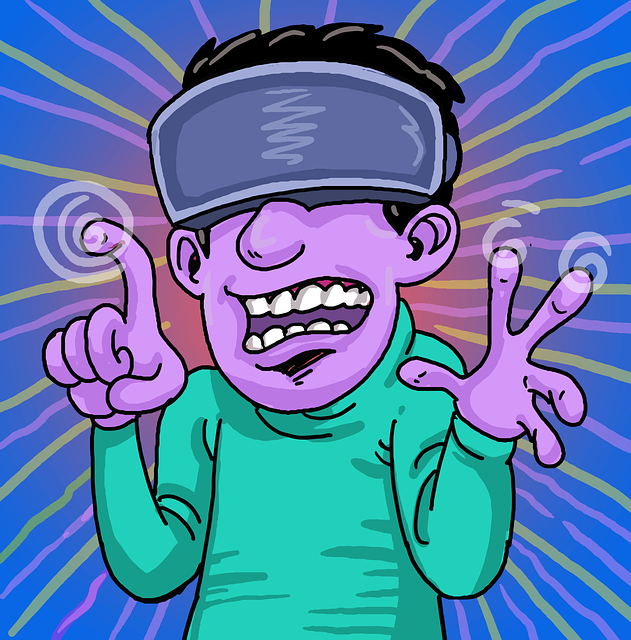Virtual therapy sessions have transformed mental health care by providing accessible, flexible, and confidential support from home via video conferencing, eliminating geographical barriers and offering increased scheduling flexibility. They facilitate secure conversations, evidence-based techniques like CBT and mindfulness, and personalized goal achievement in a safe digital environment. Effective virtual therapy requires a quiet, private space with good audio/video quality, personalized comfort, stable internet connections, and adapted communication strategies to address the digital divide. Privacy and security are paramount, with robust encryption and ethical considerations including informed consent and client satisfaction. Platforms like Zoom, Skype, BetterHelp, and Talkspace have popularized virtual therapy, while advancements in VR and AI promise even more personalized, innovative mental health solutions.
In today’s digital age, virtual therapy sessions have emerged as a revolutionary approach to mental health care. Understanding this modern method involves recognizing its accessibility and convenience, benefits that have become even more apparent during recent global events. This article explores various aspects of virtual therapy, from setting up optimal environments to implementing effective communication strategies and addressing ethical considerations. We delve into integral technology tools and forecast future trends shaping this growing field.
Understanding Virtual Therapy Sessions: A Modern Approach to Mental Health Care

Virtual therapy sessions have emerged as a revolutionary modern approach to mental health care, bridging the gap between traditional in-person therapy and remote access to psychological support. Through video conferencing platforms, clients can now connect with therapists from the comfort of their homes, eliminating geographical barriers and offering increased flexibility in scheduling appointments. This innovative method has gained significant traction, especially in today’s digital era, where many individuals prefer remote solutions for various aspects of their lives.
By leveraging technology, virtual therapy sessions provide an accessible and convenient way to address mental health concerns. They offer a safe and confidential space for clients to engage in therapeutic conversations, participate in activities, and work towards personal goals. With advanced encryption protocols ensuring privacy, clients can feel secure sharing sensitive information. Moreover, virtual therapy allows therapists to utilize various evidence-based techniques, such as cognitive-behavioral therapy (CBT) and mindfulness practices, tailored to each individual’s unique needs.
The Benefits of Online Therapy: Accessibility and Convenience

The rise of virtual therapy sessions has revolutionized mental health support, making it more accessible and convenient for many individuals. One of the key advantages is the elimination of geographical barriers. Patients can now access therapists located in different parts of the world, breaking down the limitations of physical distance. This accessibility ensures that people who might not have had the means or time to travel to a clinic can receive much-needed therapy.
Online therapy sessions offer a flexible and efficient way to manage mental health. With just a stable internet connection, individuals can participate in therapeutic conversations from the comfort of their homes. This convenience allows for more regular and consistent attendance at sessions, as patients are not burdened by travel time or costs. As such, virtual therapy has proven to be a valuable option, especially for those who prefer remote services or face challenges in accessing traditional in-person treatments.
Setting Up the Perfect Virtual Therapy Environment

Creating an ideal environment for virtual therapy sessions is a key step in ensuring effective and productive online counseling. The setting should be quiet, private, and free from distractions to mimic the focus and intimacy of an in-person session. A well-lit, clutter-free space with a comfortable chair and a stable internet connection are essential. This environment allows for open communication without technological interruptions.
Consider personalizing your virtual therapy room with items that make you feel at ease, such as a plant or a favorite piece of art. Good audio and video quality are also crucial. Test your equipment beforehand to ensure clear sound and image, enabling therapists and clients to connect naturally. This setup fosters trust and encourages vulnerability, which are vital for successful virtual therapy sessions.
Effective Communication Strategies for Remote Sessions

In the realm of virtual therapy sessions, effective communication is paramount to building a strong therapeutic alliance despite the digital divide. Therapists and clients must adapt their communication strategies to navigate this new landscape. One key approach involves active listening, where both parties focus intently on each other’s words, ensuring understanding and empathy. This requires clear and concise language, as miscommunication can easily occur in remote settings due to lack of non-verbal cues.
Additionally, technology itself plays a crucial role. Using video conferencing tools with good audio and visual quality enhances interaction. Therapists should also familiarize themselves with various platforms, from simple chat apps to more sophisticated video software, to offer flexible options catering to different client preferences and technical capabilities. Regular check-ins on technical issues ensure smooth sessions, fostering a sense of security and comfort for both the therapist and client in this virtual crucible.
Addressing Challenges and Ethical Considerations in Virtual Therapy

Navigating virtual therapy sessions brings a unique set of challenges and ethical considerations that therapists and clients must be aware of. One primary concern is ensuring patient privacy and security in online platforms, as sensitive information shared during sessions could be vulnerable to cyberattacks or unauthorized access. Therapists need to employ robust encryption methods and adhere to strict data protection regulations to safeguard client confidentiality.
Another challenge lies in establishing a therapeutic alliance in a virtual setting. Building trust and rapport with clients over screens can be more difficult than in-person interactions. Therapists must adapt their communication techniques, utilizing non-verbal cues and active listening skills to foster a safe and supportive environment. Ethical guidelines also mandate informed consent from clients, clearly explaining the benefits, limitations, and potential risks of virtual therapy sessions while ensuring they feel comfortable continuing treatment remotely.
Integrating Technology: Tools and Platforms for Online Therapy

In the realm of modern mental health care, integrating technology has brought about a significant shift towards accessible and convenient solutions, particularly with the rise of virtual therapy sessions. Online platforms and specialized tools have revolutionized the way therapists interact with their clients, making therapeutic services available to a broader audience. These digital advancements enable secure video conferencing, allowing for face-to-face interactions in a virtual setting, thus replicating many aspects of traditional in-person therapy.
The popularity of virtual therapy sessions has spurred the development of various user-friendly platforms and applications. Some popular options include Zoom, Skype, and specialized mental health apps like BetterHelp or Talkspace. These tools offer features such as encrypted communication, screen sharing for collaborative activities, and even integrated chat functions to facilitate continuous support between sessions. The accessibility and convenience of these online platforms are especially beneficial for individuals in remote areas or those with limited mobility, ensuring they can receive the therapy they need without geographical barriers.
Future Prospects: Trends Shaping Virtual Therapy Practice

The future of virtual therapy sessions looks promising, with several trends shaping and enhancing mental health care practices globally. As technology advances, virtual reality (VR) is emerging as a powerful tool to create immersive therapeutic environments, offering unique experiences for both therapists and clients. This innovative approach allows individuals to confront fears or process traumatic memories in safe, simulated settings.
Additionally, artificial intelligence (AI) has the potential to revolutionize virtual therapy by personalizing treatment plans based on individual needs. Chatbots and natural language processing can facilitate initial assessments, provide support between sessions, and offer immediate feedback, making mental health care more accessible and efficient. These trends indicate a shift towards personalized, technology-integrated mental healthcare solutions, improving outcomes for those seeking virtual therapy sessions.
